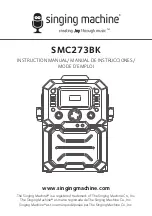
Page 3
AMP OUTPUT
RANGE
OUTPUT
VOLTAGE
WEIGHT
DUTY
CYCLE
ELECTRICAL
INPUT
AIR
REQUIREMENTS
20-40a
96V DC
12KGS
60%@30A
60%@40A
110V AC OR 220V
AC
60-70PSI
Operation:
1. Before attempting to use this unit on an actual project or object of value, practice on a similar material as there is a
moderate learning curve necessary before achieving proficiency in cutting.
2. Place the ground cable clamp on a clean, bare area of your work piece. Scrape, wire brush, file or grind a bare area
if necessary to achieve a good ground connection.
3. Set air pressure to the appropriate pressure with the knob located at the upper right side of the front panel. The
pressure indicating gauge is located directly above the air pressure knob and is generally set at 60 to 70 psi. The
actual pressure required is dictated by the thickness of the metal being cut. Lower pressure for thinner metals,
higher pressure for thicker or harder metals.
4. Set the output amperage knob located at the center of the upper panel to an appropriate setting base on the
thickness of the metal being cut. Lower amperage for thinner metals, higher amperage for thicker metals, keep in
mind that more is not always better as too high of an amperage setting will result in overheating of the unit and
excessive molten discharge from the cut.
5. Make sure that all your safety wear is in place and the area is completely free of flammable material.
6. The best results are achieved by holding the tip at a 90° angle to the cut line.
7. With practice, you will be able to exercise precise control over this extremely powerful device, harnessing its energy
to create clean, precise and intricate cuts in many forms of steel and iron up to 3/8
‘’ thick.
8. While you practice, experiment with different speeds. You will find that thinner materials will allow a faster motion
while thicker materials will require a slower motion to achieve a through cut.
9. A good form of practice is to attempt a series of straight lines while creating the cleanest edge with a minimum of
molten material remaining on the cut edge. This minimizes the cleanup of the edge with a grinder or file. Another
excellent technique is to practice cutting your initials out of a piece of steel.
Care and Maintenance
It is extremely important
that the air supply be clean and dry. A separate moisture trap, water/oil separator or
desiccant system should be used. The plasma cutter has a built - in
“last-chance” moisture separator which requires
draining each time you have completed work with the unit. This feature is located on the underside rear corner and is
drained by keeping the unit level and gently pulling down on the drain fitting.
Constantly inspect the torch tip for excessive erosion, molten metal accumulation or burning. If damaged, it must be
replaced.
Before each use, inspect all electrical connections, cables, supply line, torch, air supply, housing and controls for
damage. If any damage or ware is noted, DO NOT USE THE UNIT.
Always store the unit in a safe, clean and dry environment.
1-800-345-4545 jegs.com























